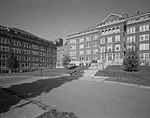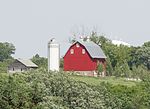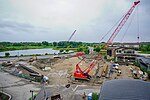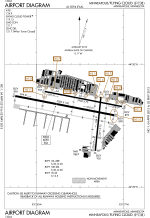Eden Prairie is a city 12 miles (19 km) southwest of downtown Minneapolis in Hennepin County and the 16th-largest city in the State of Minnesota, United States. At the 2020 census, it had a population of 64,198. The city is adjacent to the north bank of the Minnesota River, upstream from its confluence with the Mississippi River.
Set in the Twin Cities' outer suburbs, Eden Prairie is part of the southwest portion of Minneapolis–Saint Paul, the 16th-largest metropolitan area in the United States, with approximately 3.7 million residents. The community was designed as a mixed-income city model, and is home to 7,213 commercial firms, including the headquarters of SuperValu, C.H. Robinson Worldwide, Winnebago Industries, Starkey Hearing Technologies, Lifetouch Inc., SABIS, and MTS Systems Corporation. It contains the Eden Prairie Center mall and is the hub of SouthWest Transit, providing public transportation to three adjacent suburbs. The television stations KMSP and WFTC are based in Eden Prairie. The nonprofit news organization Eden Prairie Local News (EPLN) also serves the community.
The area features numerous municipal and regional parks, conservation areas, multi-purpose trails, and recreational facilities. There are more than 170 miles (270 km) of multi-use trails, 2,250 acres (9 km2) of parks, and 1,300 acres (5 km2) of open space. Popular recreational areas include Staring Lake, Lake Riley, Purgatory Creek, Miller Park, Round Lake, and the Minnesota River Bluffs Regional Trail.Eden Prairie has been featured as one of Money magazine's "Best Places to Live" in America several times since 2006. It earned first place in the 2010 survey and second place in 2016.









